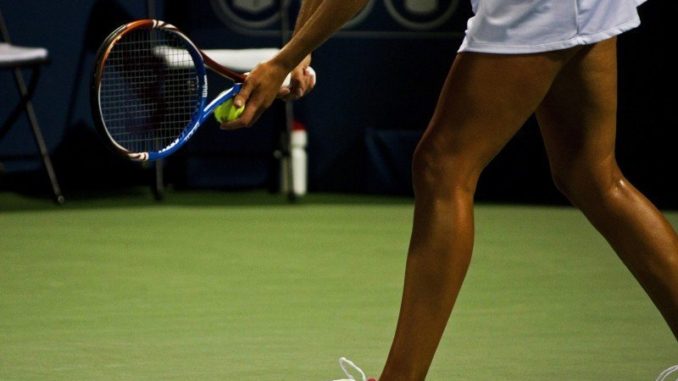
In our new tennis series, tennis author and researcher Brian Elliot gives his views on various aspects of the sport. Today, he speaks of Movement and the Errors Tennis Players Make.
Footwork is a key element in tennis, but it can also seriously hinder a player’s ability to perform well on court as it affects a player’s balance.
If anyone has watched a pro tennis player play an amateur player in a tennis match, it quickly becomes obvious that the professional player is calmer.
Professional players can hit the ball in almost an effortless form, and this creates far greater power behind the shots than the amateur player has whose feet are moving and running down every shot as if it was his or her last point. Great effort may come at a great cost for too many players.
Just because players move their feet a lot, does not mean they are better. Their excessive movement may cost them the ability to hit the ball in the perfect state. Yes, moving to the ball is essential, but there is no need to move to the ball and overcompensate for a ball that just needs to be struck well.
One solution to this is calmness. Staying calm helps relax a player and relinquishes the tenseness in the body that may affect a player’s ability to strike a ball.
Never give up great form for bad movement.
Other notes that players need to remember is not to take too many steps. Sometimes, one player just takes one extra step, and that in some matches is all it takes to lose when two players are dead even in terms of skill and stamina. Taking a step back instead of forward or talking an extra step to change directions often hurts players on court.
The best way to hit a tennis ball is by understanding the steps it takes to hit and still be balanced while moving. If that concept is too difficult to understand, players will try their setup position which is approximately their final three steps before hitting the ball.
There is one step that most players do not even know exists, but they need to utilize, and that is the “after step” on the volleys.
Most players will step into a volley without striking the ball first. This process just sent most of the players’ energy and power into the ground, leaving only what power the players have left to hit with just their arms.
You can also read about the Tri-Force in Tennis and how it helps players here.
Brian Elliot is the author of Tennis Sequence. The topics in book discuss the following: The Art of “Balance, Rhythm & Power” in tennis, the Triangle System ∆ The Degree of Change in tennis, the Simplicity of Tennis & Singles and Doubles Sequences. You can buy Tennis Sequence here
.
Be the first to comment